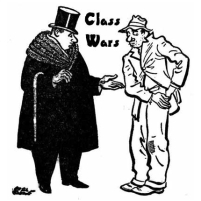Segregation Returns to U.S. . . . Income Segregation
Thursday, August 09, 2012

Segregation is back in the United States, thanks to the growing problem of income inequality.
Increasingly, neighborhoods in American cities are becoming segregated from one another by differences in household earnings, according to a new study by the Pew Research Center.
The report finds that the percentage of lower-income households located in mostly poorer areas in almost all of the country’s 30 largest cities increased from 23% in 1980 to 28% by 2010. Likewise, the rate of upper-income households in largely well-to-do neighborhoods doubled over the same 30-year period, from 9% to 18%.
“These increases are related to the long-term rise in income inequality, which has led to a shrinkage in the share of neighborhoods across the United States that are predominantly middle class or mixed income—to 76% in 2010, down from 85% in 1980—and a rise in the shares that are majority lower income (18% in 2010, up from 12% in 1980) and majority upper income (6% in 2010, up from 3% in 1980),” according to the Pew Research Center.
-Noel Brinkerhoff
To Learn More:
The Rise of Residential Segregation by Income (by Richard Fry and Paul Taylor, Pew Research Center)
- Top Stories
- Unusual News
- Where is the Money Going?
- Controversies
- U.S. and the World
- Appointments and Resignations
- Latest News
- Trump to Stop Deportations If…
- Trump Denounces World Series
- What If China Invaded the United States?
- Donald Trump Has a Mental Health Problem and It Has a Name
- Trump Goes on Renaming Frenzy






Comments